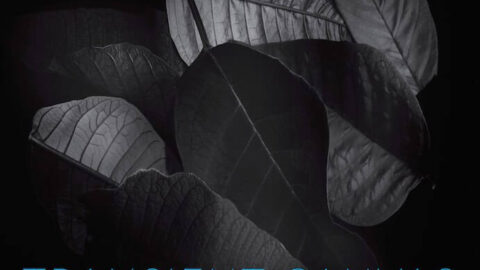In the sweepstakes of contemporary music, the marimba and the bass clarinet have—for different reasons—made out like bandits. The marimba is a signifier of the global, a bunch of different sized pieces of wood, an overgrown toy. The bass clarinet is a chimera with enormous timbral and registral range, the capacity for terrifically rude interjections and bewitchingly sinuous lines alike.
They’re like grenadilla chocolate and rosewood peanut butter, and—thanks in part to Boston’s Transient Canvas (a duo of Amy Advocat on clarinet and Matt Sharrock on marimba)—their duo rep is growing even as we speak. Transient Canvas has, per its website, commissioned over 75 new works; five of these are featured on Sift, a 2017 release from New Focus Recordings. These pieces’ composers are all relatively young, born between 1974 and 1990, and all based in New England. They may be Advocat and Sharrock’s peers, but the duo clearly holds their work in high regard, approaching Sift’s interpretations with an ethic of seriousness and attention to detail that less conscientious performers might reserve for older, fully established eminences.
The title track, by Daniel T. Lewis, is an instantiation of a particular kind of piece of contemporary music: namely, the kind in whose metaphorical narrative various stresses are introduced that precipitate a crisis. You know the kind I’m talking about. According to its program note, sift “intends to represent an exhaustion, a drawing-up of energy, a struggle to accomplish something, and a final and inevitable collapse.” Mission accomplished. sift demonstrates that the sounds of a bass clarinet and a marimba simultaneously bowed and struck with a mallet (for example) can, in the hands of the right performers, fuse into marvelously complex and intriguing sonorities. What it doesn’t demonstrate is why those sonorities must be wrought into tools for telling a story—a story, in particular, that’s already been so often told. I would have been happy to let them just be themselves for the ten and a half minutes of the piece’s duration.

The remarkable sound-world of sift benefits from the record’s generally wet acoustic (it was recorded in Tufts’s Distler Hall and in a presumably very live room at Futura Studios in Boston), but not all of the pieces on the album fare so well in such reverberant conditions. Tina Tallon’s dirty water is full of gestural details and quick exchanges that might have spoken better in a smaller room. However, the piece’s effusions retain enough of their appeal to make for a convincing experience: dirty water begins with a recitative punctuated by small moments of surprise that eventually subsume the entire fabric of the piece. Accordingly, the back half feels more alive than the front, which seems in retrospect like a somewhat rote, obligatory setup—just so much “clarinet material”—however beautifully shaped by Tallon and rendered by Advocat. dirty water is a transplant’s love letter to Boston; perhaps the probationary period of the piece’s opening is a reflection of something about her relationship to that city, one which (like the Standells said) is loved as much for its blemishes as for its beauties.
Curtis Hughes’ Vestibule III is more content to be about its material than the other works on Sift. It’s a challenging piece: the tension between its “claustrophobic sense of repetition and inhibition” and its “ecstatic and sensuous larger musical construction” is compelling, posing an earnest (and welcome) question about the affective relationship between a heard moment and our understanding, conditioned by memory and molded by expectation, of the whole. The composer’s program note promised “sentiments that verge on lyrical tenderness;” however, I’m relieved to report that I detected no sentiments matching that description.
John Murphree’s Purge is a showpiece for the duo, offering them some choice cuts of ensemble playing that highlight their strong rhythmic connection. The piece purports to be about “throwing something away,” but what, in the piece’s conceptual mapping, is being thrown away? Purge ends with an unmistakably cadential gesture; it may be that the invocation of throwing-away is meant to compare the presentation of musical phrases to the delivery of a line of dialog: just throw it away. Certainly Purge afforded the duo the chance to toss off a cavalier lick or two.

At almost twice the length of the next-longest piece on Sift, Adam Roberts’ Nostalgia Variations is the most ambitious in scale. Agnostic, not afraid of taboos, and digressive, Nostalgia Variations has many points of formal articulation and a few moments of sublime mystery. (The former are cheap; the latter are dear.) It’s a piece in which many things are tried, and few fit, and the sensation of their not fitting is at issue in the piece—the real theme. Roberts’s willingness to squander the aura of each variation as the next begins shows admirable dedication to the Nostalgia Variations’ bigger picture. Rather than identifying a “middle path” through the contradiction described in the program note between “saccharine expression” and “irony and rejection of emotion,” Nostalgia Variations settles for a portrait of that contradiction in deep and well-calibrated colors. So much the better: the result is a much more compelling experience than the one Roberts’s program note seems to indicate he was aiming for.
It must have been a huge undertaking for Transient Canvas to prepare Nostalgia Variations by itself, let alone the four other pieces on the CD, each of which has its own challenges. The earliest recordings on Sift date from 2014, so this record has been at least three years in the making; judging by the evidence presented here of Transient Canvas’s interpretive vigor and taste in repertoire, I’d say it was three years well spent.
























